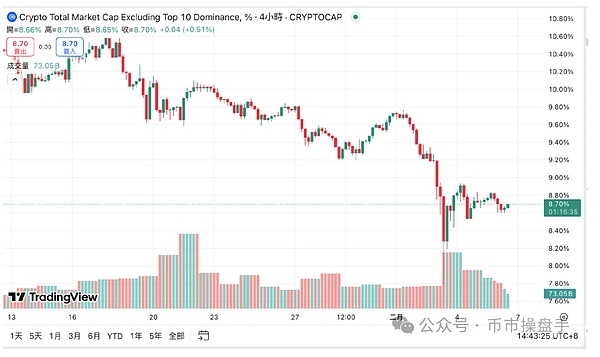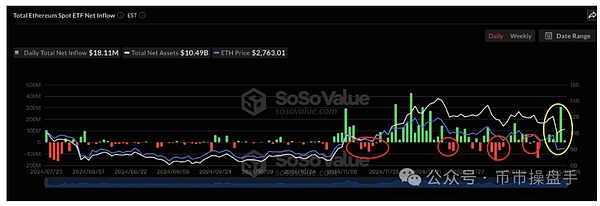During the 2025 Spring Festival, when most people were looking forward to the red envelope market, the crypto market started with a crash. On February 3, altcoins suffered the most brutal massacre in history, with the median single-day maximum decline of the top 100 currencies by market value being 44%, and even large-cap currencies such as Ethereum falling by 34%. The crash caused about 700,000 people to blow up their positions, with a liquidation scale of up to $10 billion, and both the scale and number of positions blown up hit a record high.
However, it is worth noting that, apart from the news of Trump's tariff increase fermenting in a small range, there are almost no obvious negative factors in the market. Therefore, this round of flash crash is more like a long-term beheading operation carefully planned by the main short sellers.
First of all, since 2018, the crypto market has ushered in the Spring Festival red envelope market for seven consecutive years, which has led many investors to place heavy bets during the 2025 Spring Festival. Secondly, the plunge of Ethereum in the last minute reached 15%, and more than half of the liquidation volume was completed within this minute. Finally, driven by the continuous increase in holdings by the Trump family and the positive expectations of the national reserve of Ethereum, the market has formed a consensus expectation for the rise of Ethereum, so that Ethereum triggered a situation of long killing long during the decline.
Although this round of decline has caused a devastating blow to the long-term vitality, it has effectively solved the two major problems that have plagued the market for a long time: "high stock positions" and "strong expectations and weak reality". After this round of decline, the holdings of altcoins fell by 54%, far exceeding the decline in the price of the currency. This means that a large number of investors actively or passively left the market during the decline. In addition, the market value share of altcoins fell from 9.8% on February 1 to 7.8% on February 3, setting a new record low in the past three years. Therefore, under the stock pattern, this round of decline actually freed up liquidity and valuation space for the continuation of the structural market.

Since the approval of the Ethereum ETF, every major adjustment of ETH has been accompanied by ETF fund outflows. However, in this round of decline since February 1, the Ethereum ETF has seen strong fund inflows against the trend, indicating that US stock funds chose to buy the bottom in the process of ETH's irrational decline. In addition, during the ETH plunge, the net outflow of crypto derivatives exchanges reached 300,000, the highest level since August 2023, which means that the momentum of stock selling pressure has been greatly weakened. In general, the author believes that the decline of ETH on February 3 was mainly caused by overheated emotions and chip games. In the absence of changes in fundamentals, ETH will continue to return to the valuation center of 3200-3500 after a short rest.

In this round of market decline, AI and MEME sectors have become the hardest hit areas, with sector indexes falling by 66% and 63% respectively. Historical experience shows that after a strong sector is severely oversold in the short term, it often takes the lead in a technical rebound when the market stabilizes. For traders who are keen on bottom-fishing, betting on the oversold rebound of AI and MEME sectors is undoubtedly a good choice.
However, compared with MEME, the rebound of the AI sector is more certain and certain, mainly for three reasons: First, AI is still one of the most certain investment themes in the global capital market in 2025. In the past month, the "stock gods" on Capitol Hill continued to buy AI company call options in large quantities. Second, the attitude of large American technology ALL IN AI is unwavering. The seven AI giants plan to invest $300 billion in the AI field in 2025, and the investment scale will reach 1.5 times that of 2024. Third, with the breakthrough of DeeSeek, a new round of cost reduction and efficiency improvement revolution is being launched in the AI field, which is similar to the evolution of the application public chain in the direction of low GAS cost and high scalability, and will eventually promote the implementation of large-scale applications. Therefore, 2025 is likely to be the first year for AGI breakthroughs and large-scale implementation of vertical applications.
In the operation of the main line of AI market, investors can pay attention to the opportunities of oversold rebound of previous strong currencies such as AI16Z, VIRTUAL, SWARMS in the short term. In the medium and long term, they can continue to pursue new AI hot spots. It should be noted that AI trading is an odds game, so do not place a heavy bet in any transaction.
 Miyuki
Miyuki








